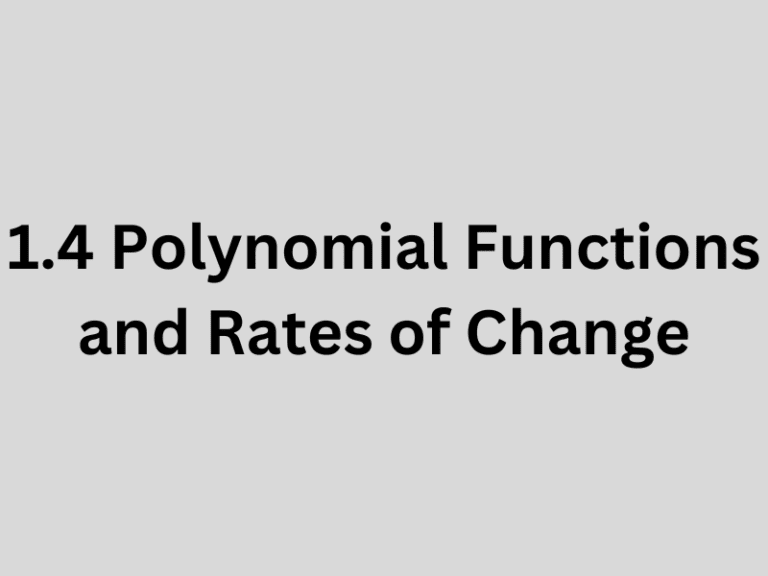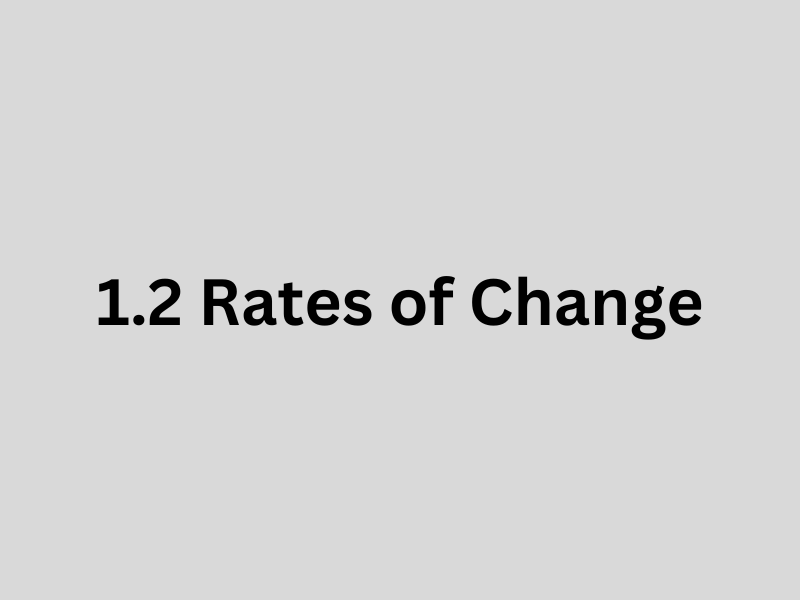Polynomial Functions and Rates of Change
Polynomial functions represent relationships involving powers of the independent variable. The rate of change in polynomial functions can vary significantly depending on the degree and the coefficients of the polynomial. Unlike linear functions, which have a constant rate of change, or quadratic functions, which have a variable rate that showcases a specific parabolic shape, higher-degree polynomials can exhibit complex behavior including multiple turning points and varying rates of increase or decrease.
Examples
Example 1: Linear Polynomial Function
Function: y = 3x + 2
This is a first-degree polynomial function with a constant rate of change of 3. It implies that for every one unit increase in x, y increases by 3 units.
Example 2: Quadratic Polynomial Function
Function: y = x^2 - 4x + 3
The rate of change in this quadratic function varies and the function exhibits a single turning point. As x increases or decreases from the vertex, the value of y changes at an increasing rate due to the squared term.
Example 3: Cubic Polynomial Function
Function: y = x^3 - 6x^2 + 11x - 6
Cubic polynomials like this can have up to two turning points. The rate of change varies more complexly compared to quadratic functions, with areas of both acceleration and deceleration.
Example 4: Fourth-Degree Polynomial Function
Function: y = x^4 - 5x^2 + 4
Fourth-degree polynomials can have up to three turning points. This function shows an even more varied rate of change, with regions where the function increases, decreases, then increases again at different rates.
Example 5: Real-World Application
A real-world example could involve modeling the height y (in meters) of a projectile over time x (in seconds) with a polynomial function such as y = -4.9x^2 + 30x + 1.5, which represents the effects of gravity and initial velocity on the projectile's flight. The rate of change here describes the projectile's velocity, which varies throughout its flight, initially positive (upwards motion), reaching zero at the peak (turning point), and then becoming negative (downwards motion).
Packet
| Practice Solutions
| Corrective Assignments
| ||||||||
AP Learning Objectives:
1.4.A Identify key characteristics of polynomial functions related to rates of change.
Frequently Asked Questions: Polynomial Functions & Rates of Change
What are Polynomial Functions?
$$ f(x) = a_n x^n + a_{n-1} x^{n-1} + \dots + a_1 x + a_0 $$
where \(n\) is a non-negative integer (the degree of the polynomial), and \(a_0, a_1, \dots, a_n\) are constant coefficients. Linear functions (\(y=mx+b\)) and quadratic functions (\(y=ax^2+bx+c\)) are specific types of polynomial functions.
How do rates of change apply to Polynomial Functions?
We typically consider two types of rates of change for polynomial functions:
- Average Rate of Change: The average change in the function's value over a specific interval \([a, b]\). This is calculated using the formula \( \frac{f(b) - f(a)}{b - a} \).
- Instantaneous Rate of Change: The rate of change at a single point. In calculus, this is found by taking the derivative of the polynomial function and evaluating it at that point.
Why is "Polynomial Functions and Rates of Change" a topic in courses like AP Precalculus (e.g., Topic 1.4)?
- Build upon the understanding of linear and quadratic functions (which are types of polynomials).
- Introduce students to the concept of average rate of change as a precursor to understanding instantaneous rates of change and calculus concepts (like derivatives).
- Explore the behavior of different types of polynomial functions, including how their graphs change shape and steepness over different intervals.
- Provide a foundation for analyzing the change in more complex functions.
How do I find the average rate of change for a polynomial function?
- Calculate \(f(a)\) by substituting \(a\) into the polynomial function.
- Calculate \(f(b)\) by substituting \(b\) into the polynomial function.
- Use the average rate of change formula: \( \frac{f(b) - f(a)}{b - a} \).






